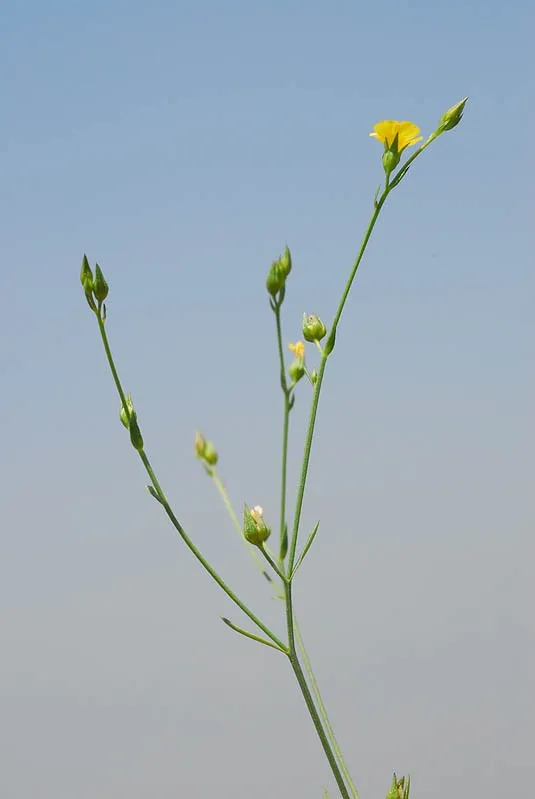Coastal Flax
Linum maritimum
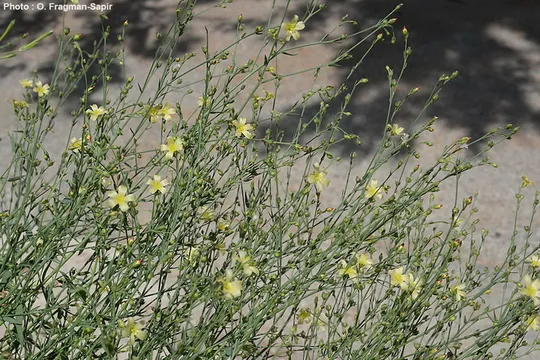
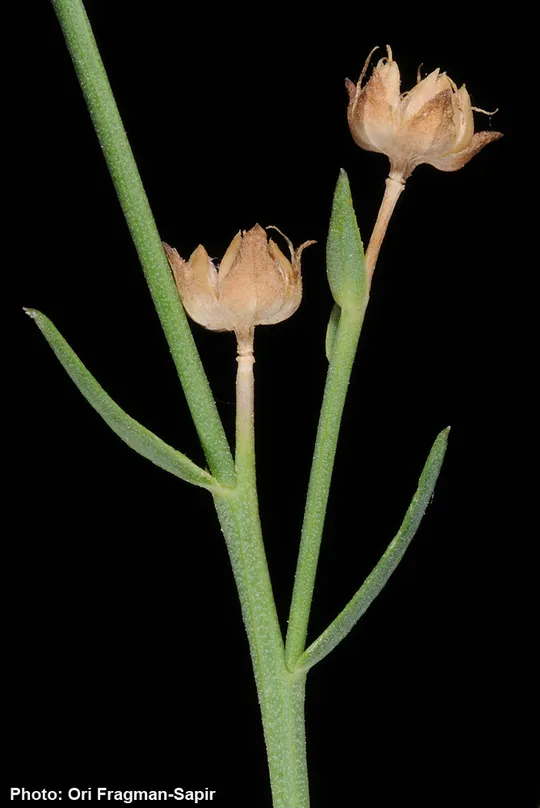
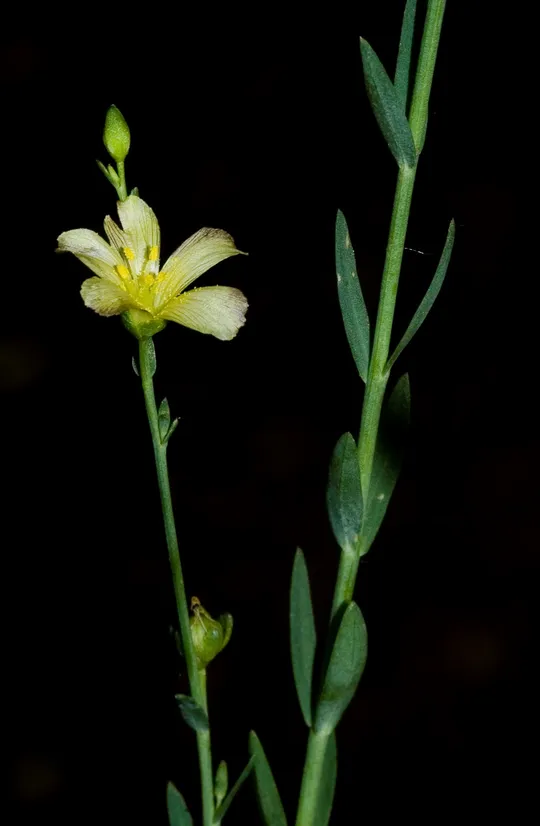
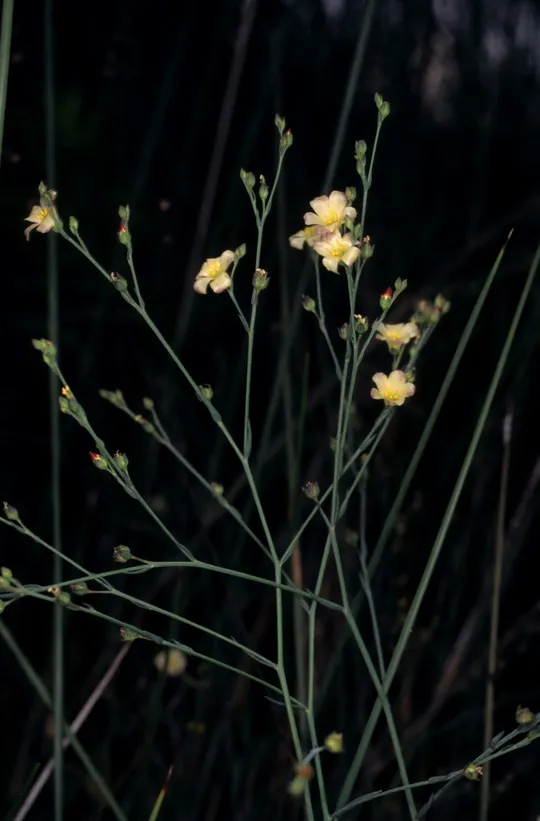
Linum maritimum now grows only on the Carmel Coast and
is known from two sites: near Dor and in the Dalia Stream. It is extinct from
other sites in this region where it had been previously observed (Kvara area). L.
maritimum is also extinct from two other regions in the
coastal plain: the Acre Valley where it was observed in the past in the Wadi Na'aman
area and at Kfar Masarik. The last observation is from 1980 (Rotem seminar);
the site is marked in black on the map, as a post-1965 site. It is also extinct
in Pleshet, from Wadi Sorek where it once grew. Naftolsky collected L.
maritimum in Rafi'ah in the Gaza Strip in 1924 and 1925.
Wetlands and moist depressions, salt marshes.
The
genus Linum
has about 200 species that
grow in temperate and subtropical areas. Its centers of origin are the
Mediterranean region and North America. L. usitatissimum, which has
light blue flowers and is used for the production of linen fibers, is the species
of economic importance in the genus. It grows in some sites in Israel as well,
as a feral species.
·
The number of regions and sites in
which Linum maritimum is found in Israel is in constant
decline. The species currently survives in only one region compared to the
three regions where it once grew. The number of L. maritimum sites has decreased to two, from six where it had once been observed.
·
At the two sites where the species is found,
the plants are concentrated in small patches whose population is estimated at a
few dozen, no more than 200.
·
L. maritimum grows in the
coastal plain that is very vulnerable to development. The small size of the
surviving populations reduces the chances of reproductive success and exposes it
to genetic and demographic threats.
·
L. maritimum sites are not
located in declared nature reserves.
·
It is found in all the Mediterranean Basin
countries and does not appear in Red species lists in mainland Europe. In Cyprus,
it is included in the list of Red species and classified as "Vulnerable" (VU).
The known Linum maritimum populations on
the Carmel Coast should be monitored and their sites demarcated and declared protected
protected areas. Re-population of L. maritimum in moist areas of Wadi Na'aman in the
Akko Valley should be considered. The species is easily cultured and should be
grown in refuge gardens in the Acre Valley, such as En Afek, and to continue processes
that have already started.
Linum
maritimum grows in the Mediterranean Basin
countries and islands: Portugal, Spain, Balearic Islands, France, Corsica,
Italy, and Sardinia, Sicily, the countries of former Yugoslavia, Greece, Cyprus
and Israel. There are also reports from Austria. In North Africa, it grows in
Morocco and Algeria.
L. maritimum was first
recorded in the flora of Turkey in 1996, and there is no record of its presence
in Syria, Lebanon and Jordan. Therefore, the populations in Israel may constitute
a disjunct enclave from the species range in the Mediterranean Basin.
Linum maritimum is an extremely
rare perennial grass found in Carmel coastal wetlands. It is in seriously
threatened due to the small number of its sites, its vulnerable habitat and miniscule
populations. Israel is the southern distribution limit of L. maritimum in the Mediterranean Basin.
Current Occupancy Map
| 1000 squre meter pixel | 5000 squre meter pixel | 10000 squre meter pixel | |
|---|---|---|---|
| number of observations | 0 | 0 | 0 |
| in total pixels | 0 | 0 | 0 |
| Family | Linaceae |
| Classification | On the endangered species list |
| Ecosystem | Coastal Plain |
| Chorotype | Mediterranean (Euro-Siberian) |
| Conservation Site | Dor Beach |
| Rarity |
1
5
6
|
|---|---|
| Vulnerability |
0
4
4
|
| Attractiveness |
0
0
4
|
| Endemism |
0
0
4
|
| Red number |
1
5.3
10
|
| Peripherality | W |
| IUCN category | DD EW EX LC CR EN VU NT |
| Threat Definition according to the red book | Critically endangered |
 Based on:
Based on:
